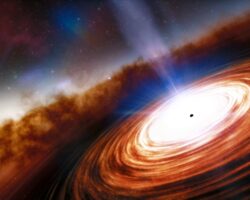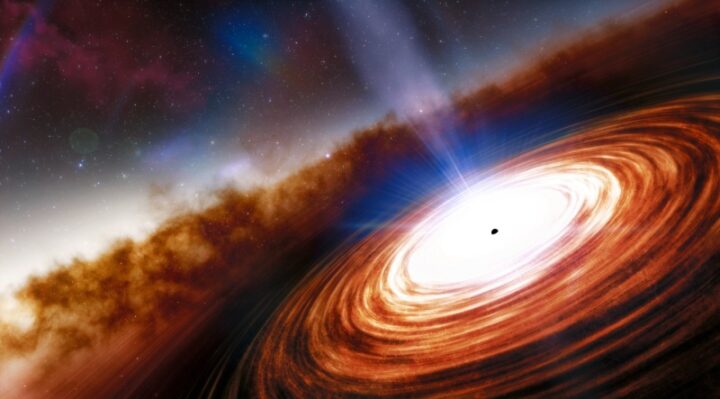A giant black hole that is waking up is responsible for the mysterious brightening of distant galaxies


A giant black hole estimated to be one million times more massive than the sun has awakened, which is why astronomers have linked the unexplained brightening of a distant galaxy in the Virgo constellation to it.
For many years, the 300 million light-year-distance galaxy known by the alias SDSS1335+0728 exhibited no notable characteristics. When scientists observed a sharp increase in its brilliance at the end of 2019, this drastically changed.
Dr. Paula Sanchez-Saez, an astronomer based at the European Southern Observatory in Garching, Germany, remarked, “We detected this source just as it began exhibiting these fluctuations in brightness.”
We are witnessing this phenomenon unfold in real-time for the first time.
In December 2019, the Zwicky Transient Facility in California noticed the galaxy’s rapid brightening for the first time.
An unexpected increase in the galaxy’s brightness was detected by this observatory, which prompted astronomers all over the world to analyze previous measurements made with both ground- and space-based telescopes and to make fresh observations.
Their study found that the galaxy had lately increased in brightness tenfold in X-rays, quadrupled in ultraviolet light, and doubled in mid-infrared light.
This drastic change’s cause is yet unknown.
As to a research paper published in Astronomy and Astrophysics, the most reasonable hypothesis suggested by the scientists is the creation of a “active galactic nucleus.”
This phenomena happens when a massive black hole at the center of a galaxy starts aggressively eating matter in its surroundings. As a result, the gas surrounding the black hole warms up and glows, producing a wide spectrum of light.
Moreover, light of different wavelengths is taken in and emitted by dust particles surrounding the black hole.
An unusual “tidal disruption event,” which occurs when a star gets too near to a black hole and is shattered, is another theory.
Tidal disruption events usually brighten a galaxy for a few hundred days at most, thus while unlikely, this scenario is still possible. To absolutely rule it out, more information is needed.


